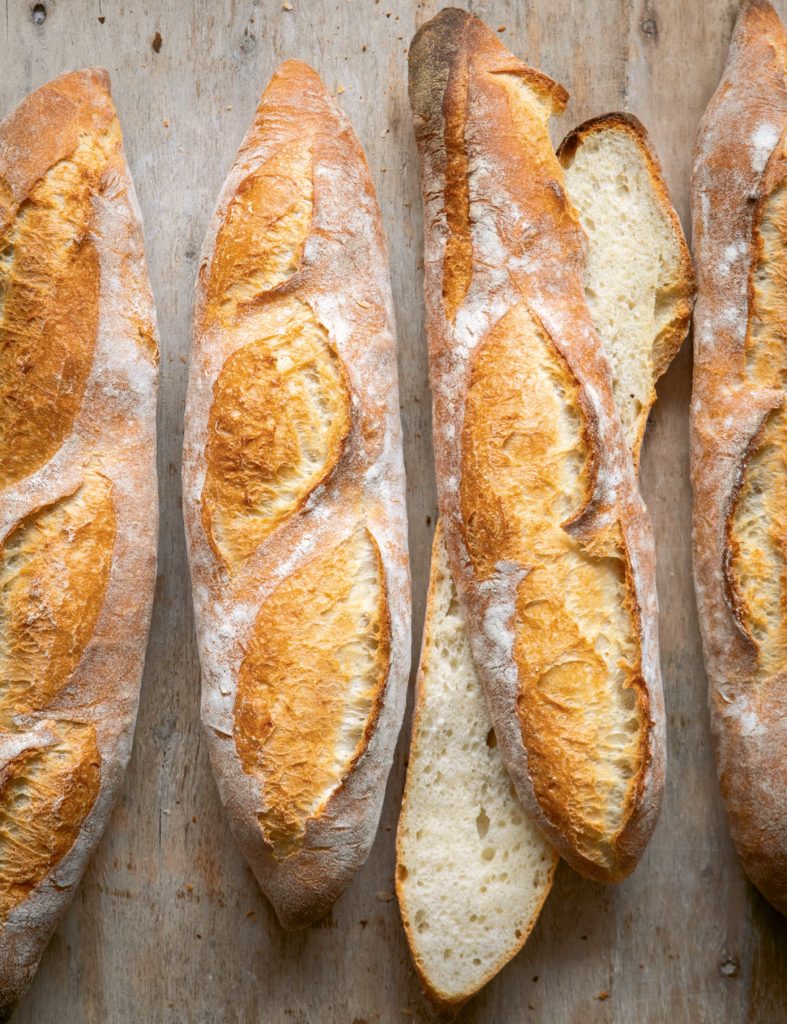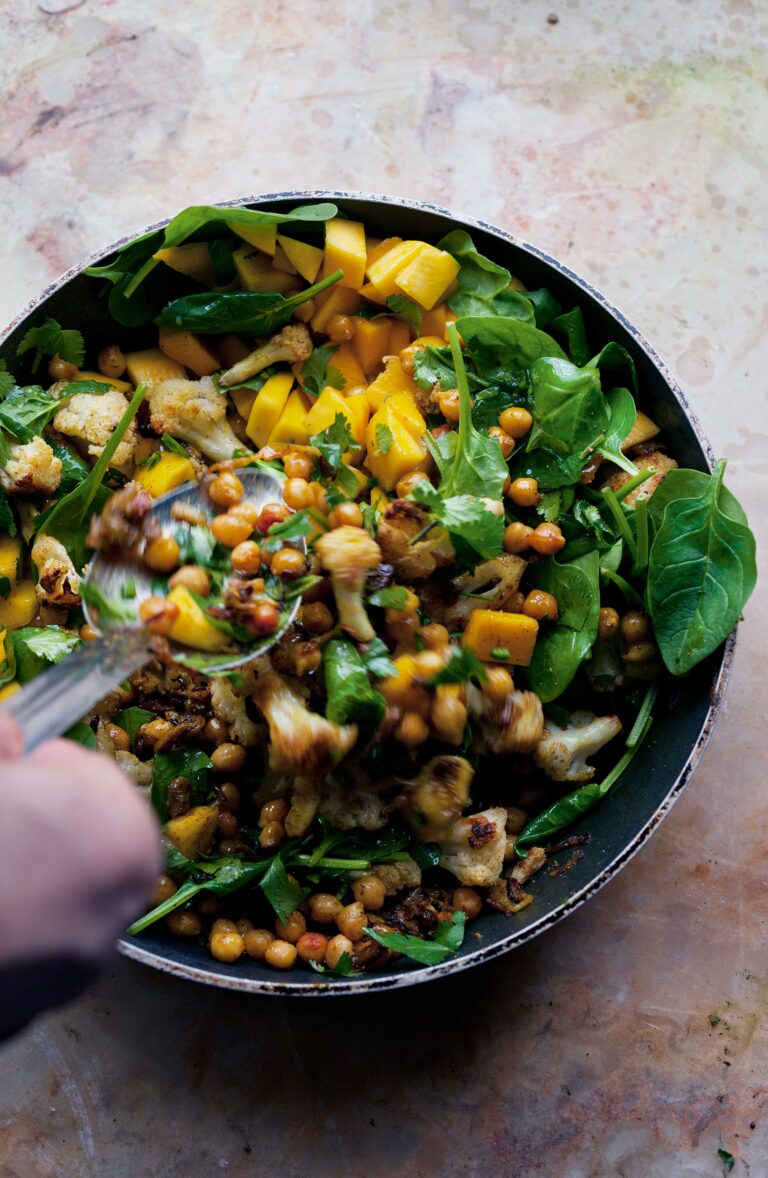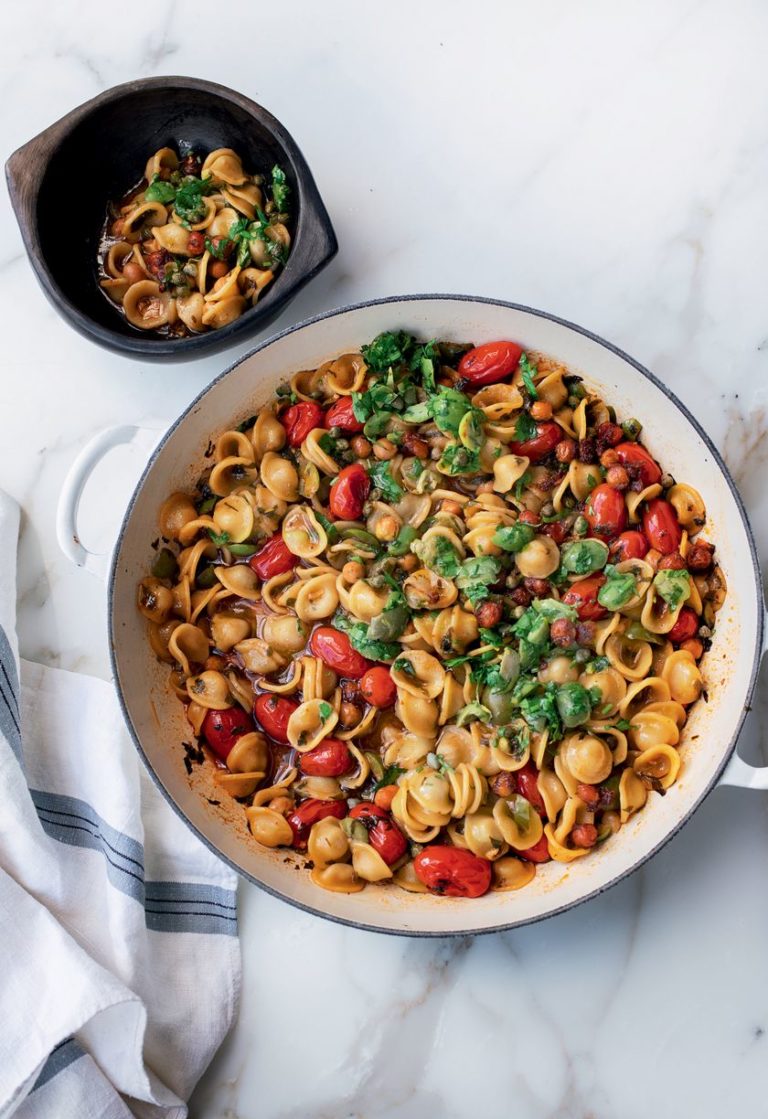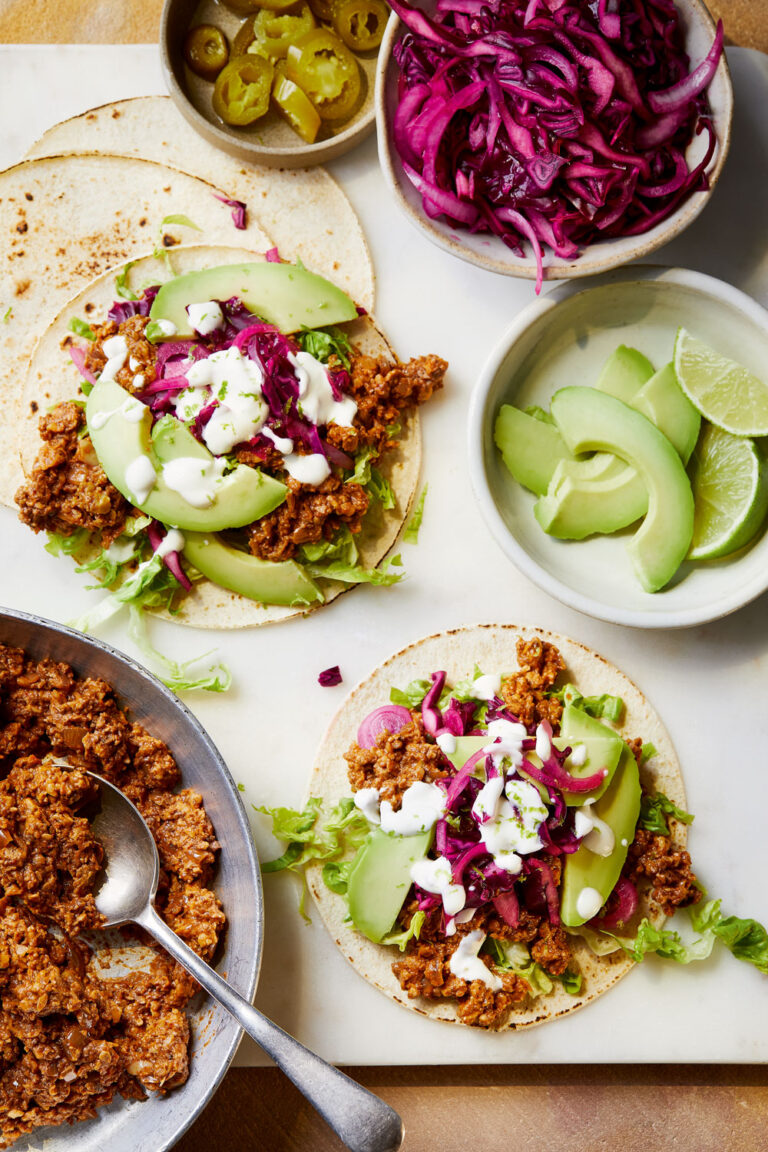Real crusty baguettes are a true craft but are completely achievable in your oven at home. It will take a little practice to get them bang on but that’s exactly why I’ve made my recipe as simple as possible. There’s no pre-ferment here, no overnight rest, you don’t even have to knead it. From flour and water to crusty baguette in as little as 3-4 hours and with minimum faff factor, this recipe is easily repeatable, which is exactly my priority if there’s a craft to be perfected: do it and do it again.
Since we are not kneading the dough here, we employ the principle of time to develop the strength the dough needs to hold the gas produced by the yeast. It’s our job just to fold the dough every once in while during its rest to create that all-important structure. We want to tighten the dough so it’s able to hold even more gas while creating a kind of layered tension so that the baguette holds a nice shape while it rises and then while it bakes.
For this recipe, we are stone-baking, which sounds great doesn’t it? “Stone Baked Baguettes!” Don’t be fooled into thinking this is a big deal because it really isn’t. It simply requires you to have a hot baking stone in the oven for you to slide your baguettes’ naked bottoms onto. As soon as the heat of the stone makes contact with the dough it will encourage your baguettes to increase in volume so much in the first 6-8 minutes of baking that they will “bloom” wonderfully, BUSTING open that top crust and creating that wicked crunchy and beautifully decorative burst on top that we all want to see. Stone baking really is the essence of the baguette, without it it’s really not the same, and embracing that one thing will actually make it easier to get those coveted characteristics.
Each recipe in Bread Every Day contains a lesson. The baguette alone has many lessons in a practical sense: stone-baking, using steam to get a great crust, scoring the dough at just the right angle to get the burst just right. But I feel the most important lessons are actually in patience and craft. Each baguette needs shaping one by one and you get a better feel for the dough with every attempt as you try and try again. It’s about trusting that you are learning and improving even when you feel like you might not be. It’s about letting go of perfectionism in favour of being content with practising. In simply DOING you are winning. Commit to a few goes at this recipe and you’ll be cracking out crusty baguettes with ease every single time.
From the book
Buy From
Baguettes
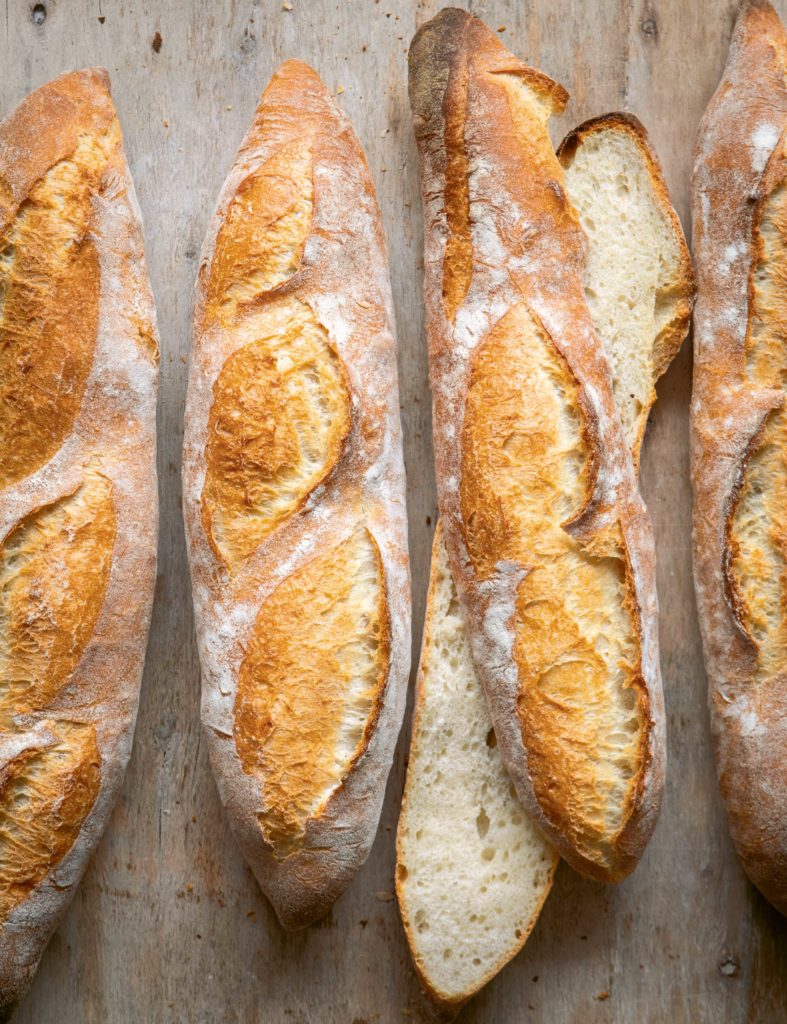
Ingredients (makes 4 baguettes):
350g (12½ oz) room temperature water
12g (½ oz) fresh yeast, crumbled, or 7g (¼oz) fast-action dried yeast
500g (1lb 2oz) strong white bread flour, plus extra for dusting
10g (½oz) salt
You will need: a baking or pizza stone; 4 narrow wooden peels, preferably, or 1 large; grignette.
Method:
Making the dough: 10–15 minutes
In a large mixing bowl, mix together the water and yeast until the yeast has dissolved.
Add the flour and salt, then mix with a dough scraper until the mixture starts to come together into a cohesive dough. Continue mixing for a minute or 2 to make sure the dough has come together really well.
Resting: 30 minutes
Shape the dough into a ball and place it back in the bowl. Sprinkle the top with a little flour, cover the bowl with a clean cloth and rest at room temperature for 30 minutes.
First fold: 2 minutes
Dust your work surface lightly with flour and use your dough scraper to turn the dough out upside down onto it, sticky side up.
Use your fingertips to flatten the dough slightly. Grasp a bit of the dough edge, stretch it out and then fold it over onto the dough. Repeat all the way around the dough, making about 12–15 folds, until you have a ball.
Resting: 30 minutes
Turn the dough over, smooth side up, and place it back in the bowl. Cover with the cloth and rest for 30 minutes.
Second fold: 2 minutes
Dust the work surface again, then turn the dough out as before. Repeat the first fold process BUT this time make only 10 folds.
Resting: 30 minutes
Return the dough to the bowl smooth side up, cover and rest as before. Dividing and pre-shaping: 5 minutes
Turn your dough out, upside down, and press it very gently with your fingertips and knuckles. Cut into 4 equal-sized pieces with your dough scraper. If you want them all to be exactly the same size, weigh them out at about 215g (7½oz) each.
Roll up each piece of dough into a rough, loose sausage, then turn seam side down.
Resting: 15 minutes
Line up your dough sausages on the work surface, cover with a cloth and rest for 15 minutes to relax.
Final shaping: 15–20 minutes
Place a clean cloth on a large baking tray and dust it well with flour, to create a ‘couche’ to support your baguettes during their final rest.
Working with one at a time, turn a dough sausage over and press gently with your fingertips on the half closest to you to flatten very lightly. We’ll be rolling the dough down to the bottom edge, not in one go like a Swiss roll but carefully in stages. Starting at one end and finishing at the other, fold that top plump edge
about half way down and press with a thumb to stick. Now you should have a slightly plumper top half that’s beginning to look like a baguette and a kind of flap hanging off the bottom.
Repeat exactly the same as before, bringing the top edge down even closer to the bottom and sealing again with your thumb. Repeating the action one last time should bring the 2 edges together, completing the baguette shape. Pinch the seam to seal it up.
Roll out the baguette with your palms to about 30cm (12in) long, making the ends pointy by applying a little extra pressure.
Resting: 30–40 minutes
Line up your baguettes, seam side up, on the floured cloth and make a pleat in between each one so that they don’t stick. Dust really well with flour and rest for 30–40 minutes.
Meanwhile, preheat your oven to 230°C fan/485°F/Gas Mark 9 with your baking or pizza stone on a middle or top shelf and a deep roasting tray on the oven floor. Half fill a kettle.
Slashing and baking: 20–25 minutes
Boil the kettle.
Carefully transfer your baguettes onto their individual wooden peels or the large one, seam side down. Use the grignette to make a few very shallow diagonal cuts, almost lengthways, down the centre of each baguette (see my tip below), then slide them onto the hot baking stone in the oven. Carefully pour the hot water into the tray below. Bake your baguettes for 15–20 minutes (see my tip below).
Remove the baguettes from the oven with your peel and let them cool on a wire rack.
Tips:
THE RIGHT TOUCH
For some breads we let the dough puff, then we take it back down to shape and let it puff again before we bake it. But when we bake a baguette, we want it to burst open to achieve that signature crispy crunchy rip on the top. So here we create a dough that is in a constant state of puff from the point we make it until we bake it, and instead of knocking the air out we give the structure tension as the pressure builds inside. Your aim is to approach the folds, pre-shape and final shape with a touch gentle enough not to push all the air out but firm enough to tighten the structure nicely. It’s a tricky balance I know, and it comes with practise.
SLASHING FOR SUCCESS
It’s logical to assume that to get those diagonal openings on the top of your baguette you need to make cuts at around 45 degrees, but that’s not the case! Think about the way we rolled the dough up, like a Swiss roll but in stages, with the tension going across the WIDTH of the baguette. In theory, it wants to open up sideways along the entire length, but if we cut it at a 45-degree angle or, even worse, across the width, it just doesn’t want to open up that way. So yes, we make diagonal cuts, but as close to lengthways as possible. Imagine a central strip running down the middle of your baguette and try to place all your cuts along it for the best chance of them opening up nicely.
THE SECRET TO A GREAT CRUST
For a good crust, you need to bake the baguettes with as high a heat as possible for as long as possible to make sure they are done without burning, so aim to keep the heat high for the full baking time, but depending on your oven, turn it down to 180°C fan/400°F/Gas Mark 6 if you need to. Much of the success of your crust lies in how well your oven keeps the steam in. If you find you lose the crust as the bread cools, spritz your baguettes all over with water to make them really wet and return them to the oven for 8–10 minutes for a crust that stays put!
Jack Sturgess is the author of the essential, accessible guide to bread-baking, Bread Every Day. If you loved this recipe, you’ll find plenty more in Jack’s cookbook, alongside illustrated step-by-step instructions, guides on kit and key techniques, and delicious ways to help you get the most out of your bread, from sandwiches to salads, breakfasts to desserts.
Find this recipe and more in
